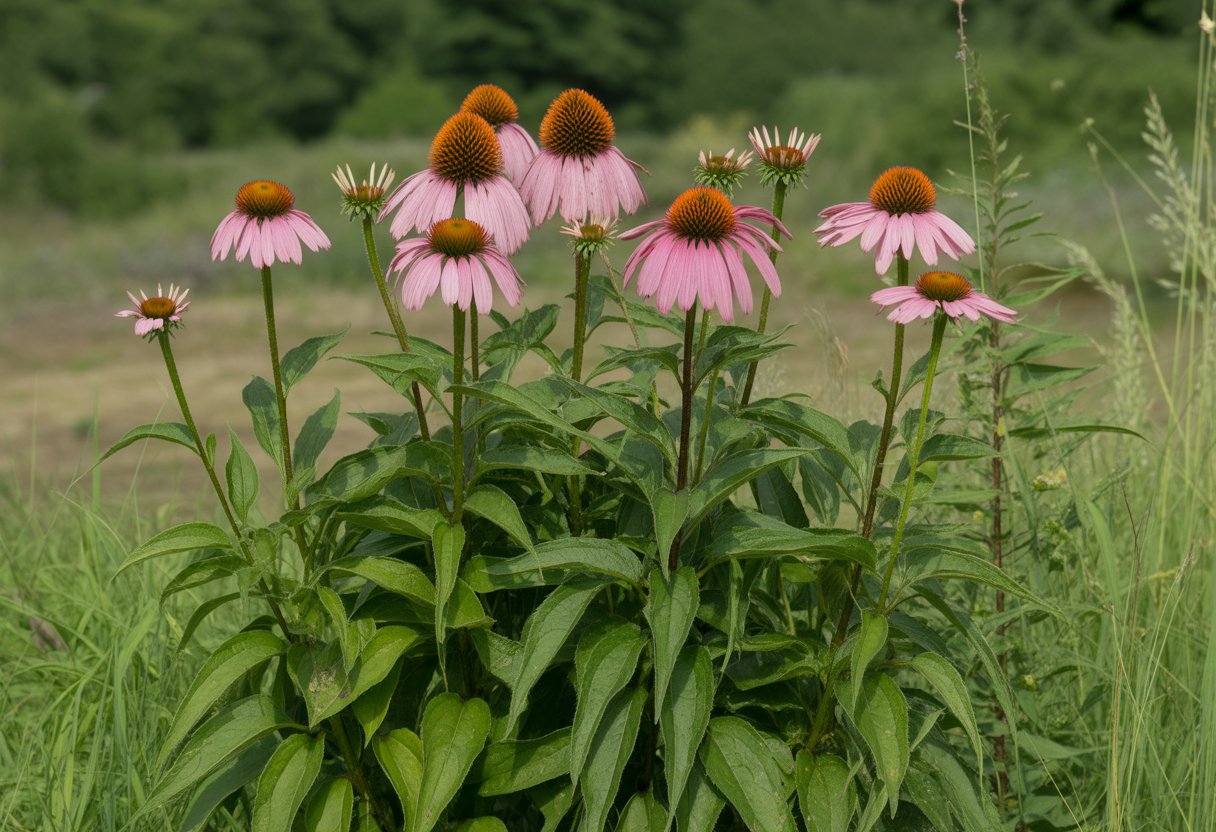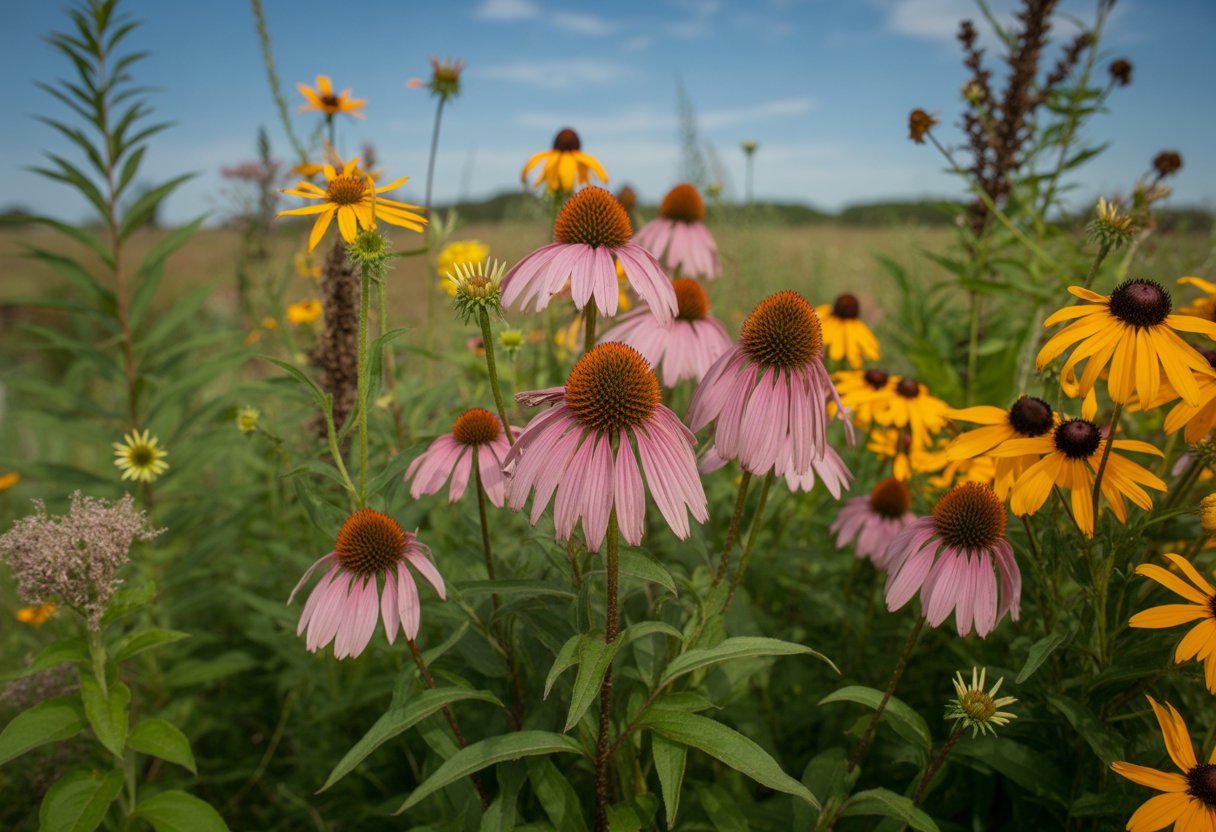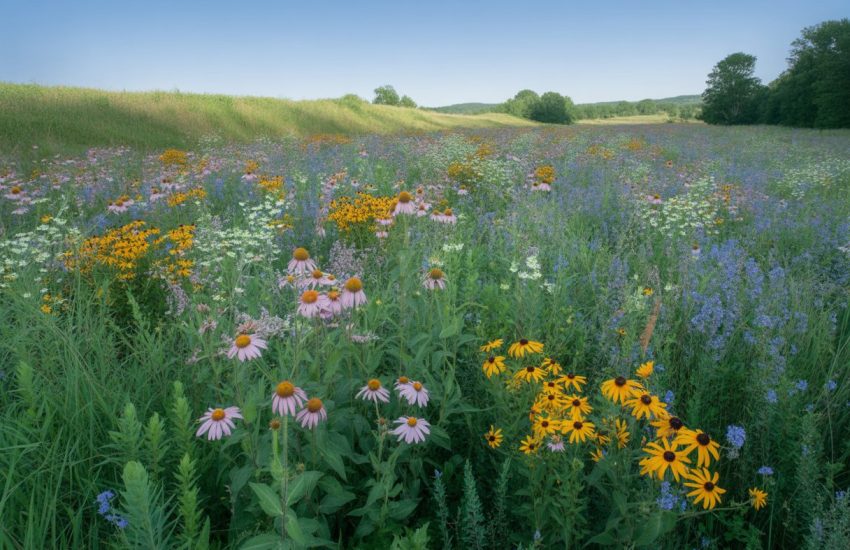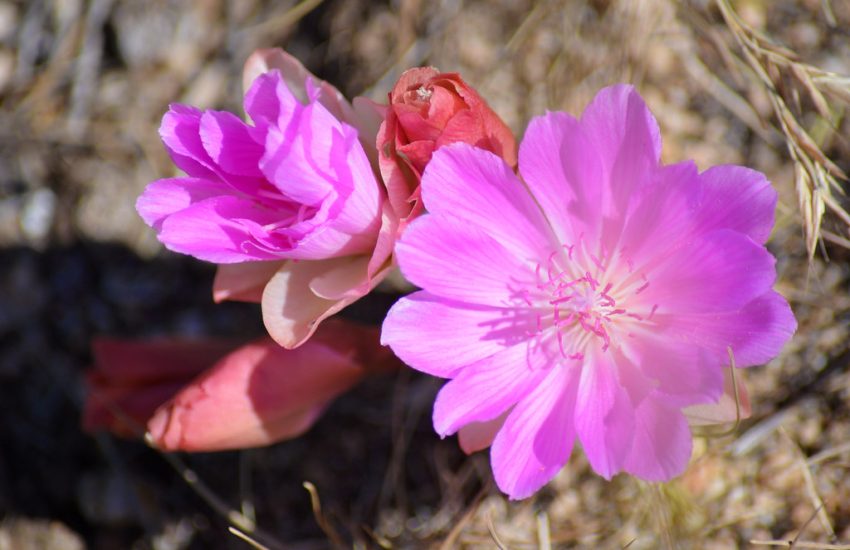Native Echinacea for New Jersey: Growing and Benefits in Local Gardens
Native echinacea, especially Echinacea purpurea, pops up naturally across parts of New Jersey and handles the state’s climate like a champ.
It’s tough, supports local pollinators, and honestly adds a lot to both gardens and wild landscapes.

Echinacea purpurea is the main native species here, famous for its big purple petals and some pretty well-known medicinal uses. Gardeners and conservationists love how it brings in bees and butterflies while barely needing any fuss.
If you want to make smart choices about planting or conservation, understanding native echinacea helps. Plus, planting it means you’re pitching in for New Jersey’s biodiversity and healthier ecosystems.
Overview of Native Echinacea in New Jersey
Native echinacea species play a big role in New Jersey’s ecosystems. They help local pollinators and keep biodiversity going strong.
Echinacea purpurea, or Eastern purple coneflower, shows up most often in the state.
Identifying Echinacea Species
You’ll spot Echinacea in New Jersey by their standout coneflowers—central spiky cone, purple or pink petals. Echinacea purpurea usually grows 2 to 5 feet tall, with big, drooping petals and an orange-brown center.
The leaves feel rough, are lance-shaped, and alternate along the stem. Native echinacea petals often curve downward, and you’ll see just one flower head per stem.
If you want to tell them apart from hybrids or non-natives, check the plant’s natural habitat and how it grows.
Ecological Importance in New Jersey
Echinacea purpurea draws in native bees, butterflies, and other insects by offering nectar and pollen.
It also attracts pest-eating insects, which helps keep the ecosystem balanced.
The plant’s deep roots hold soil in place and boost soil health. Echinacea adds to native plant diversity—a big deal as development and invasive species put pressure on New Jersey’s wild spaces.
Distribution of Echinacea purpurea and Eastern Purple Coneflower
Echinacea purpurea, or the Eastern purple coneflower, grows all over New Jersey’s meadows, open woods, and prairies.
It prefers sunny, well-drained spots but doesn’t mind a little shade.
You’ll find it mostly in central and southern parts of the state, often in preserved areas and roadsides.
Conservation efforts focus on these regions to keep native populations going and help pollinators.
Best Practices for Growing Native Echinacea

Echinacea does best with plenty of sunlight, good soil, and a little attention as it grows.
Picking the right spot, prepping the soil, and caring for both seedlings and mature plants goes a long way toward healthy growth.
Site Selection and Sunlight Needs
Echinacea really loves full sun—aim for at least six hours of direct sunlight daily.
If it gets too much shade, you’ll see fewer flowers and slower growth.
Choose spots with well-drained soil and decent air flow to avoid fungus problems. Steer clear of low spots that get frosty in spring, since young plants can’t handle late frosts well.
Spacing plants 12 to 18 inches apart helps with air flow and keeps them from fighting over nutrients.
Echinacea also works as ground cover or fits into mixed beds where sun is plentiful.
Soil Preparation and Planting
Go for loamy to sandy soil that drains well and sits at a slightly acidic to neutral pH (6.0 to 7.0). Mixing in compost boosts drainage and feeds the plants.
Loosen the soil 8 to 12 inches deep before you plant.
Wait until the last frost passes, then plant seeds about ¼ inch deep. For seedlings, gently spread the roots, cover with soil, tamp down lightly, and water well so the soil settles.
Caring for Seedlings and Mature Plants
Keep seedlings moist but not soggy. Water gently until the roots get established.
Mulch with organic material to hold in moisture and block weeds.
Once mature, echinacea handles drought pretty well but appreciates deep watering during dry spells.
Deadheading spent blooms encourages more flowers.
Don’t cram plants together—give them breathing room to avoid disease, and keep an eye out for pests like aphids.
Echinacea in Jersey-Friendly Landscaping

Native Echinacea fits right in with sustainable, easy-care gardens in New Jersey. It plays nicely with other natives, boosts pollinator diversity, and looks great through the seasons.
Companion Native Plants
Echinacea gets along with a bunch of native species that share its needs. Favorites include monarda fistulosa (wild bergamot), rudbeckia hirta (black-eyed Susan), and achillea millefolium (yarrow).
These plants like the same soil and sun conditions.
Ornamental grasses add texture and structure, while Boltonia asteroides’ late-season blooms keep things interesting.
Zizia aurea attracts early pollinators, and asclepias (milkweed) is a must for monarchs—so these combos help more than just your garden’s looks.
Attracting Pollinators and Beneficial Insects
Echinacea draws native bees, butterflies, and hoverflies with its big, open flowers loaded with nectar and pollen.
Milkweed nearby supports monarch butterflies, which is a big deal for New Jersey’s Jersey-Friendly Yards program.
Other helpful insects, like parasitic wasps and lady beetles, thrive here too and help keep pests in check.
Planting Echinacea with these companions builds a balanced ecosystem, supporting pollinators and natural pest control.
Seasonal Interest and Garden Design
Echinacea flowers from mid-summer into early fall, giving you long-lasting purple and pink color.
The sturdy stems and seed heads stick around, feeding birds like goldfinches late in the season.
Pairing Echinacea with late-blooming boltonia asteroides and ornamental grasses creates layers and movement in your garden.
Early-blooming zizia aurea adds yellow and brings in insects early on. This mix keeps your garden lively and functional from spring through fall.
These combos fit with Jersey-Friendly Landscaping goals—less water, more biodiversity, and not much maintenance.
Integrating Echinacea with Other Native Flora

Echinacea does best when you plant it with native trees, shrubs, and ground covers that match its growth and ecological needs.
Mixing these plants helps create diverse habitats for wildlife and keeps soil healthy.
It also keeps things interesting through the seasons and makes for a more sustainable garden.
Pairing With Native Trees and Shrubs
Echinacea fits well with native trees like American holly (Ilex opaca) and shrubs such as spicebush (Lindera benzoin).
These plants offer partial shade and wind protection, making life easier for echinacea.
Shrubs like inkberry (Ilex glabra) and winterberry (Ilex verticillata) bring winter color with their berries and attract birds, while not hogging all the nutrients.
Trees add height, shrubs fill in the middle, and this layering gives pollinators and insects food and shelter all year.
Supporting Biodiversity with Ground Covers
Ground covers like wild ginger (Asarum canadense) and white snakeroot help stabilize soil and block weeds around echinacea.
They keep the soil moist and shaded at the surface, which cuts down on water loss.
Other solid choices include boneset (Eupatorium perfoliatum), which blooms with echinacea and attracts a range of pollinators.
Solidago species such as stiff goldenrod (Solidago bicolor) and goldenrod canadensis provide late-season nectar and help butterfly larvae.
All this diversity makes your garden tougher against pests and disease—pretty good trade-off, right?
Promoting Sustainable Garden Habitats
Adding scarlet bee balm (Monarda didyma) and anise hyssop (Agastache foeniculum) alongside echinacea gives pollinators a wider menu. These plants bloom at different times, so there’s always something for bees and butterflies to find.
Cardinal flower (Lobelia cardinalis) brings hummingbirds into the garden, which is honestly just fun to watch. Plus, it helps pollination happen more naturally.
When you use native species, you don’t have to fuss as much with fertilizers or extra watering. Native plants just know how to handle local conditions.
Mixing trees, shrubs, and perennials that belong here creates a space that practically takes care of itself. It’s good for wildlife, and honestly, it makes life easier for anyone who gardens.


